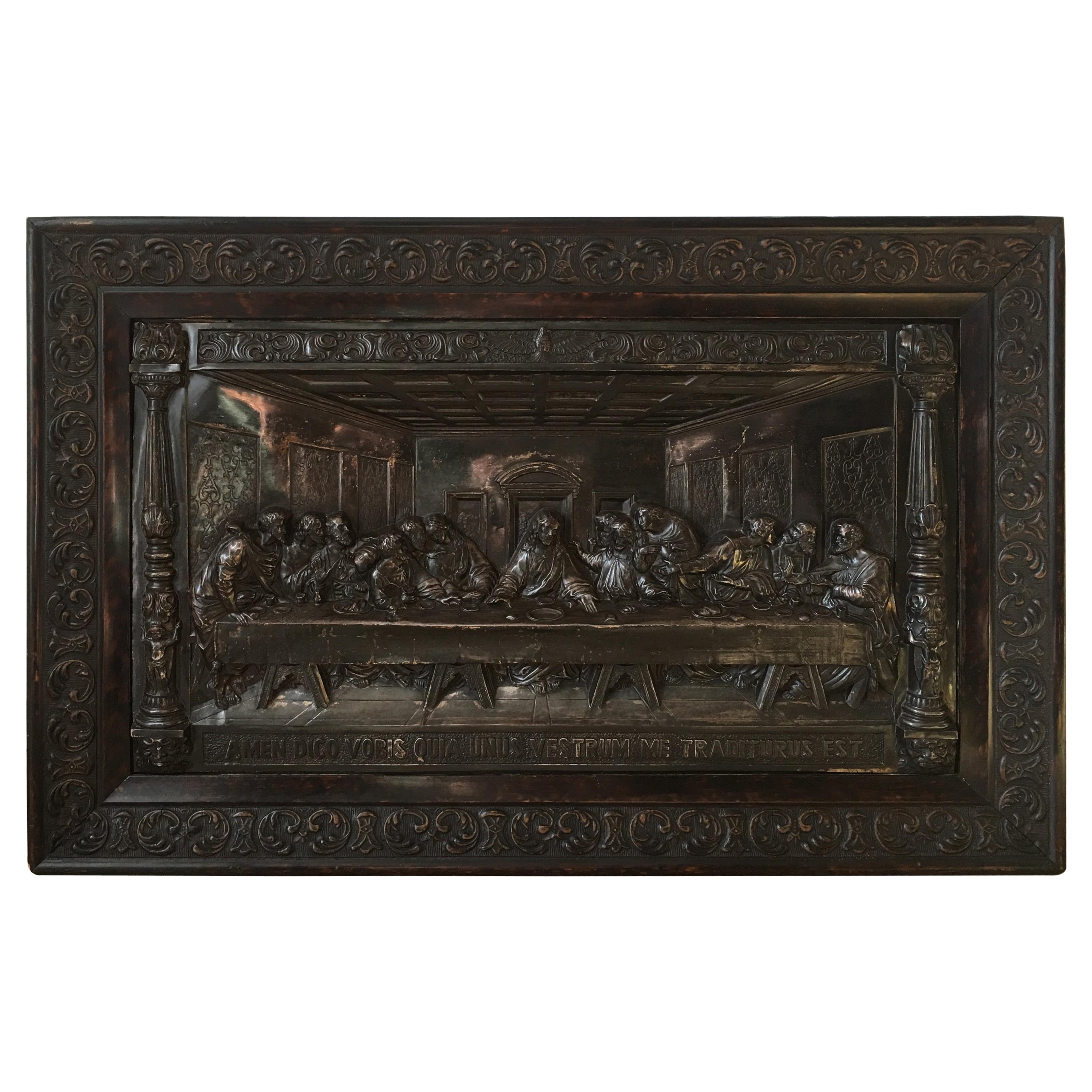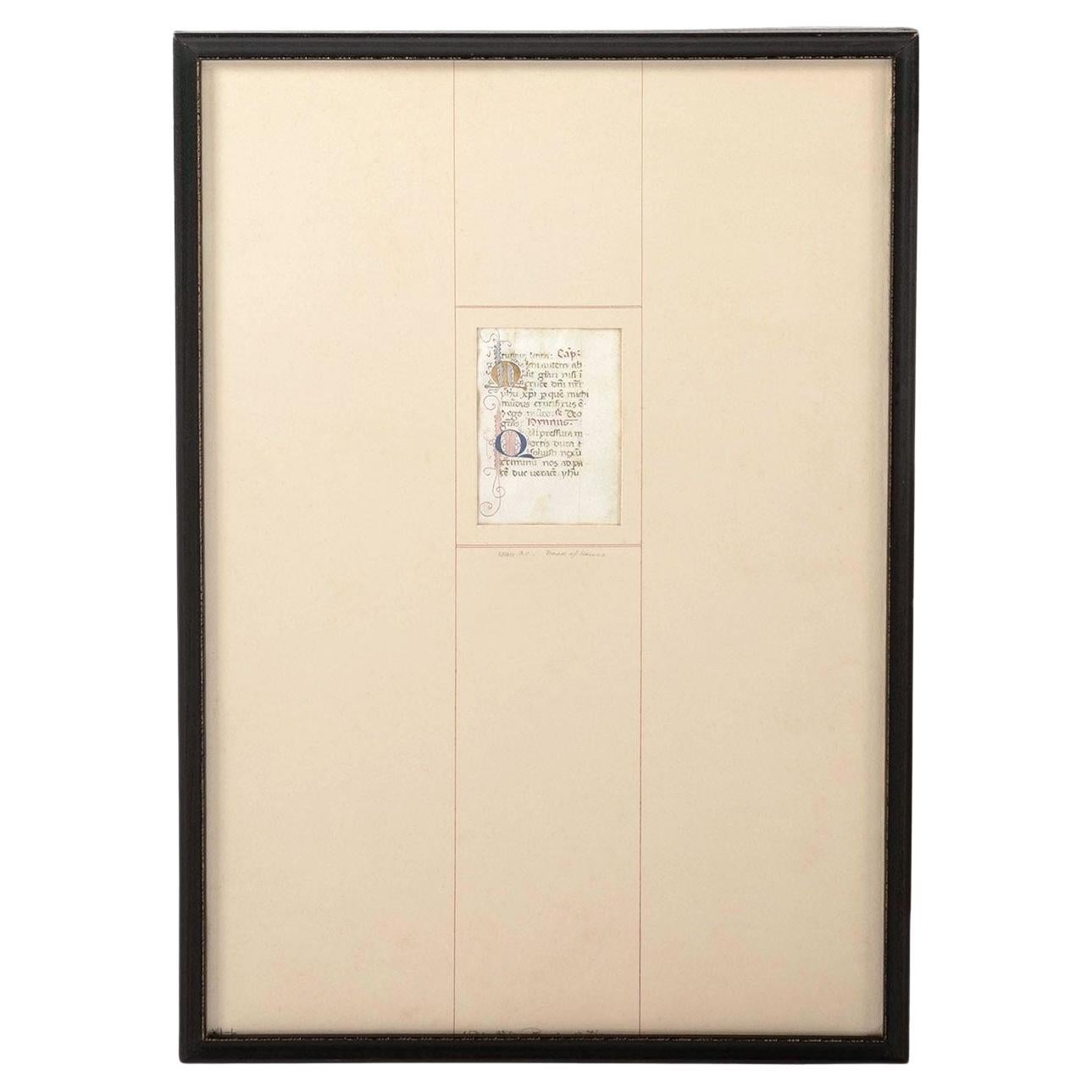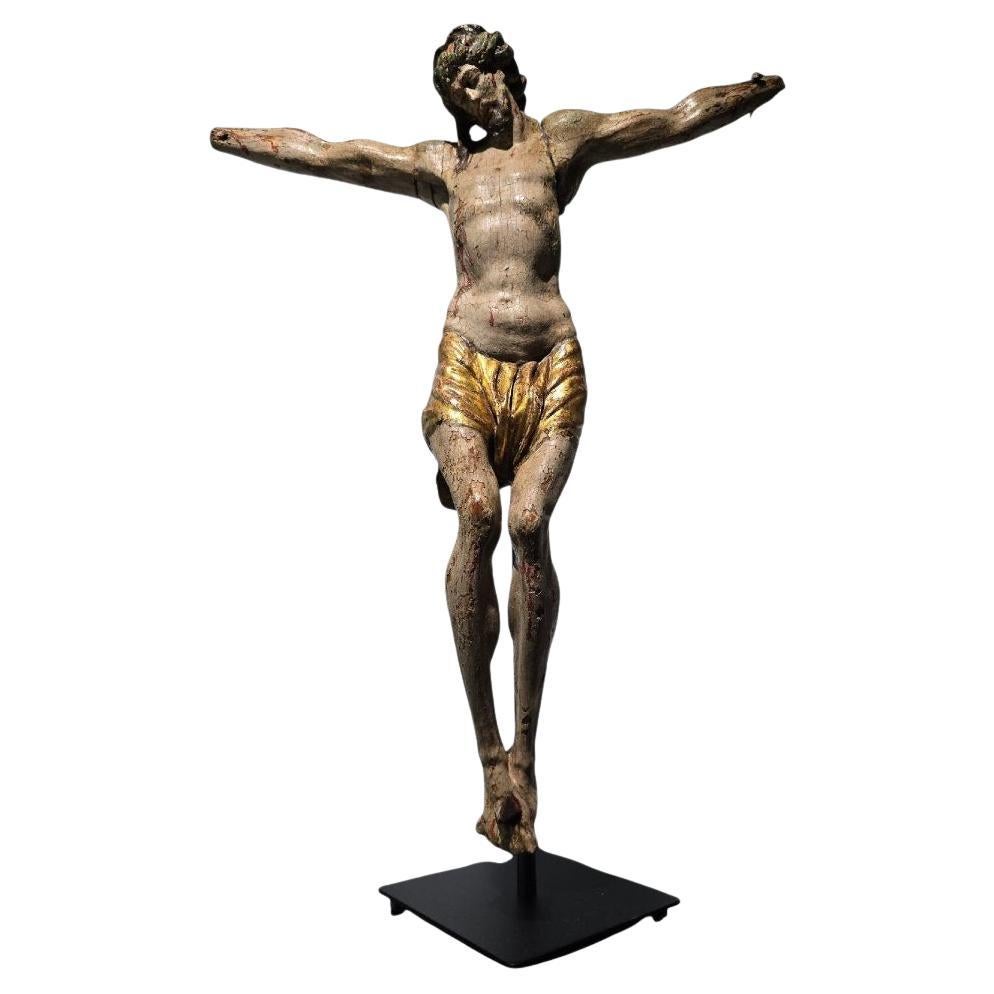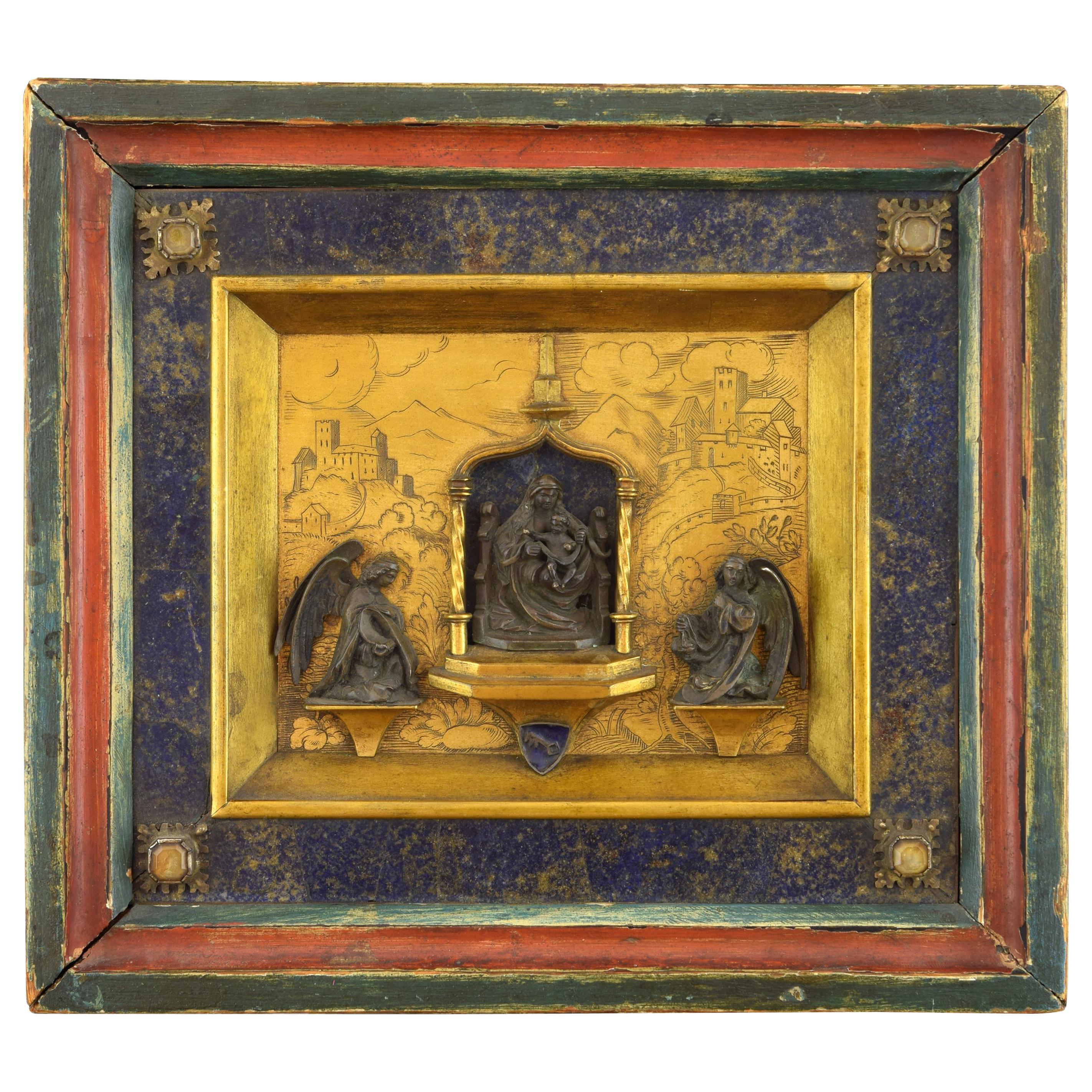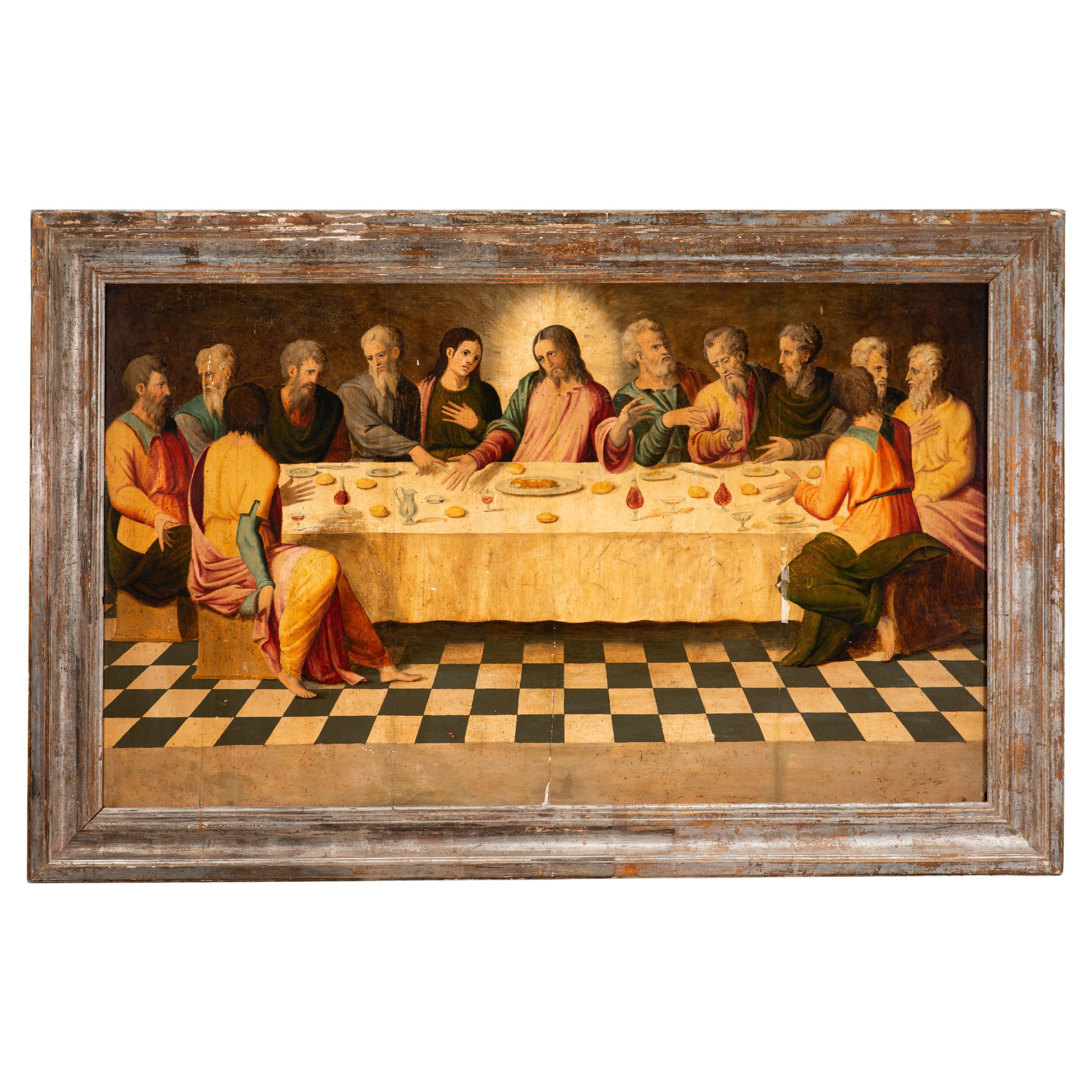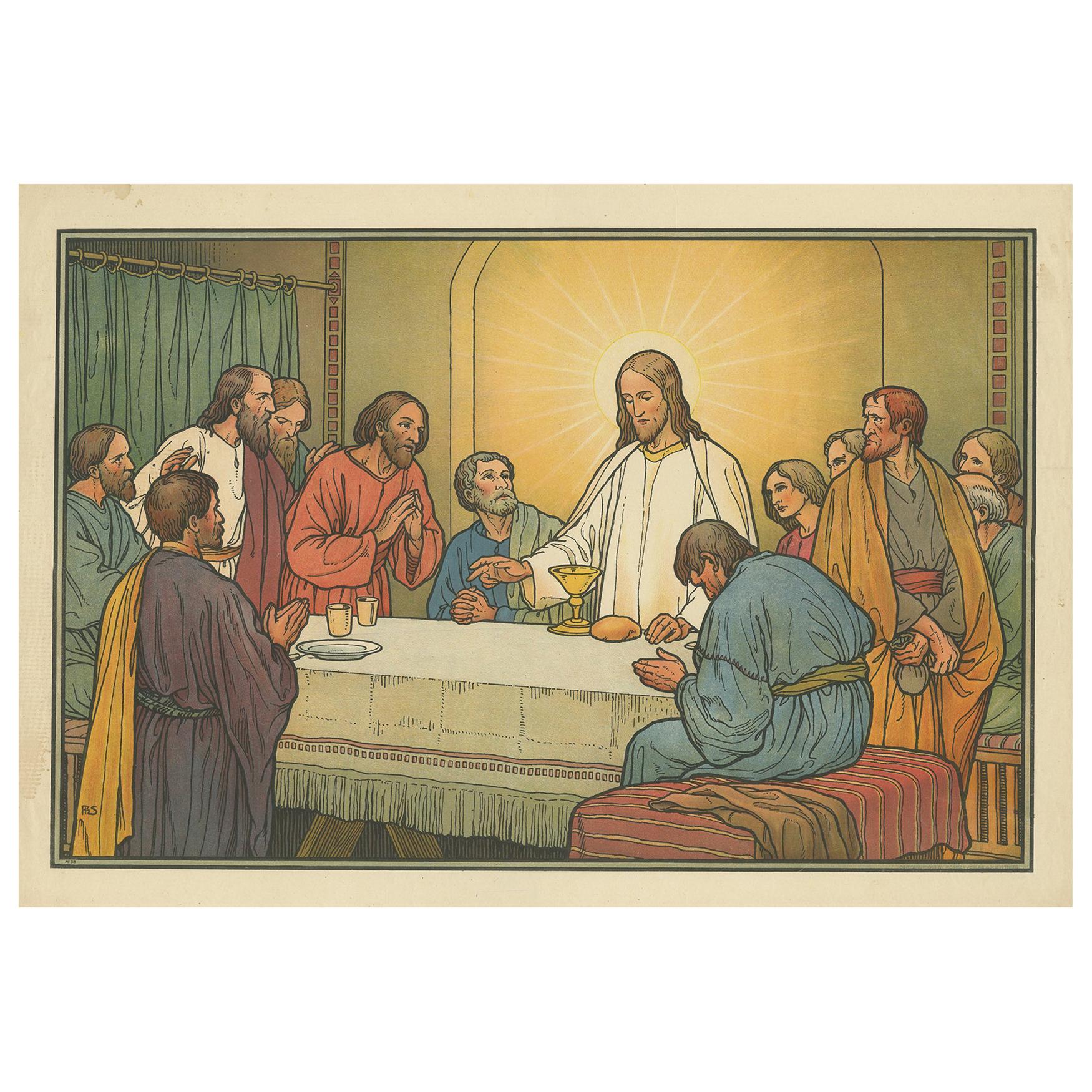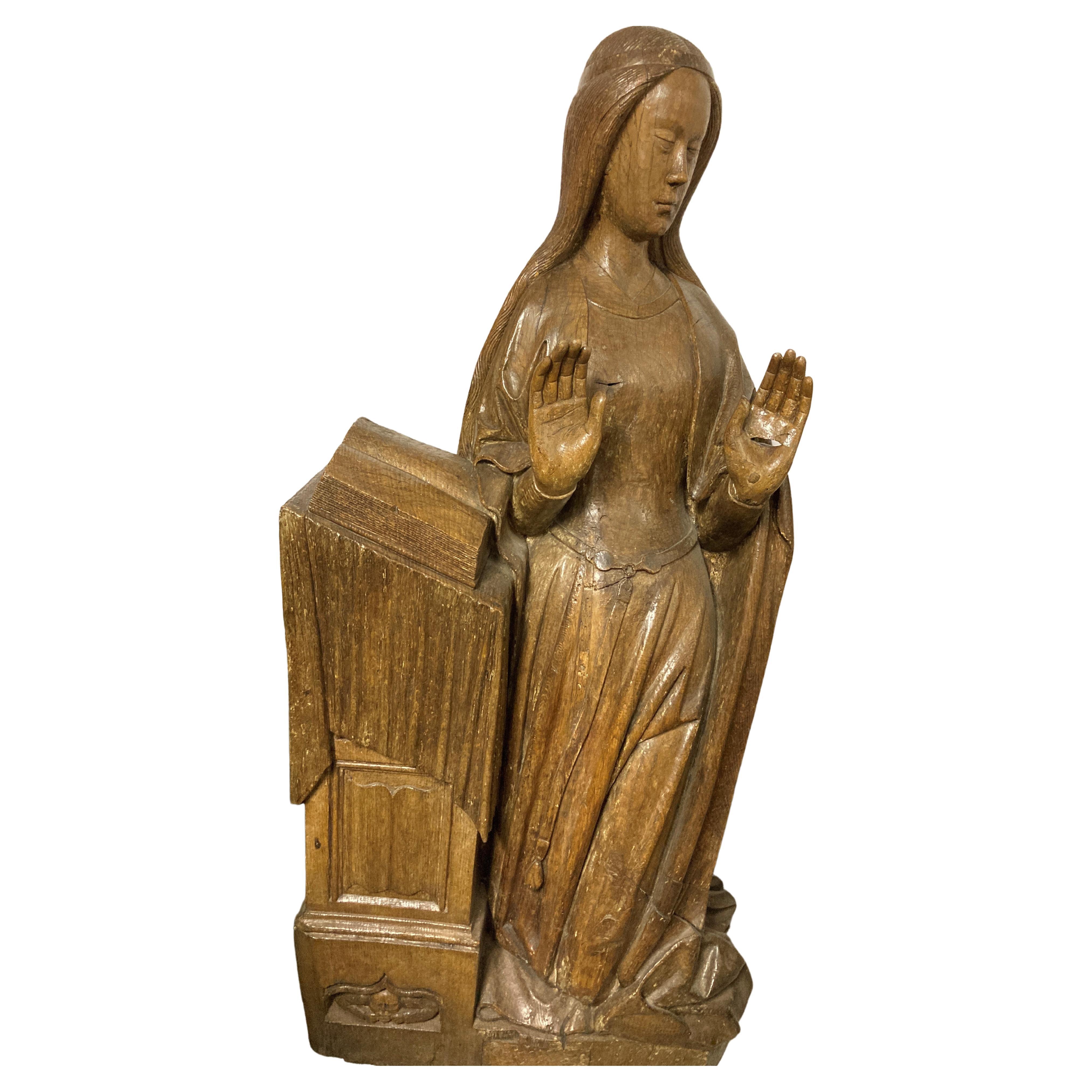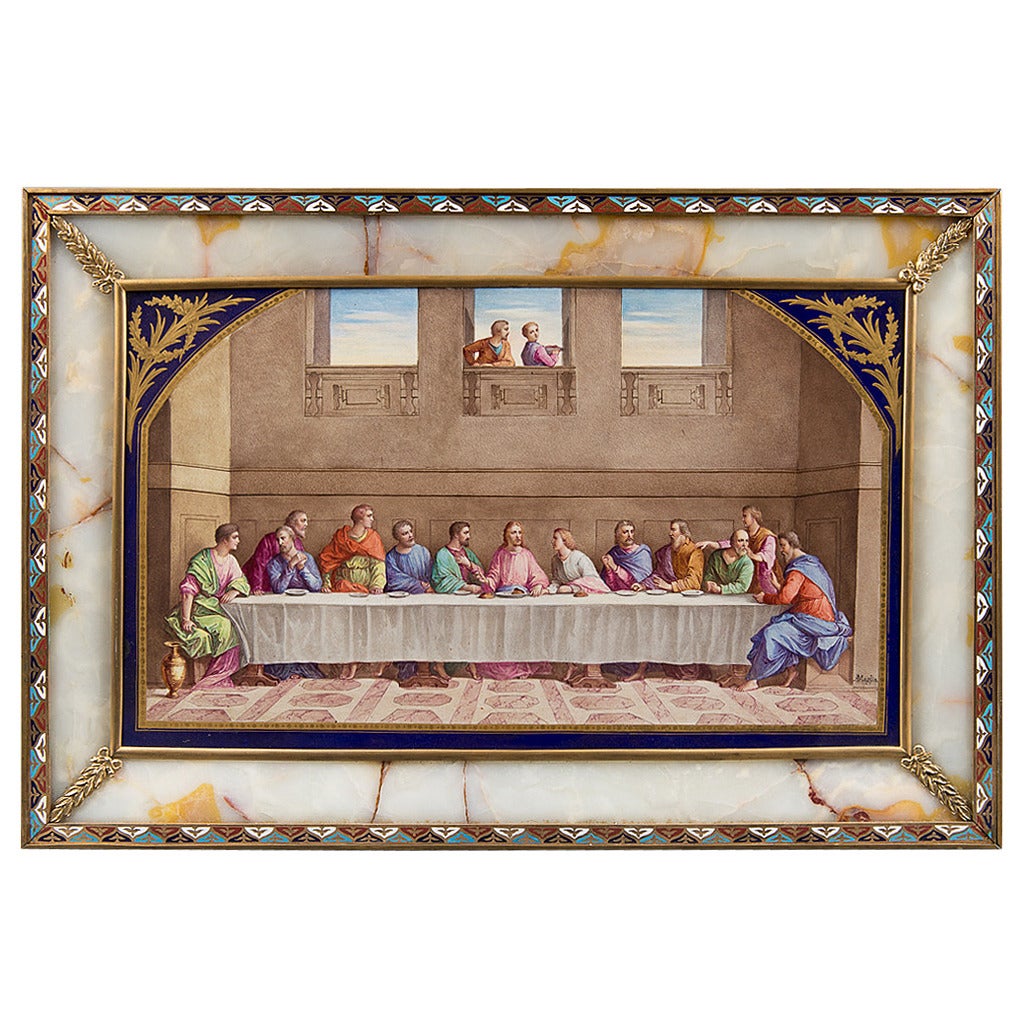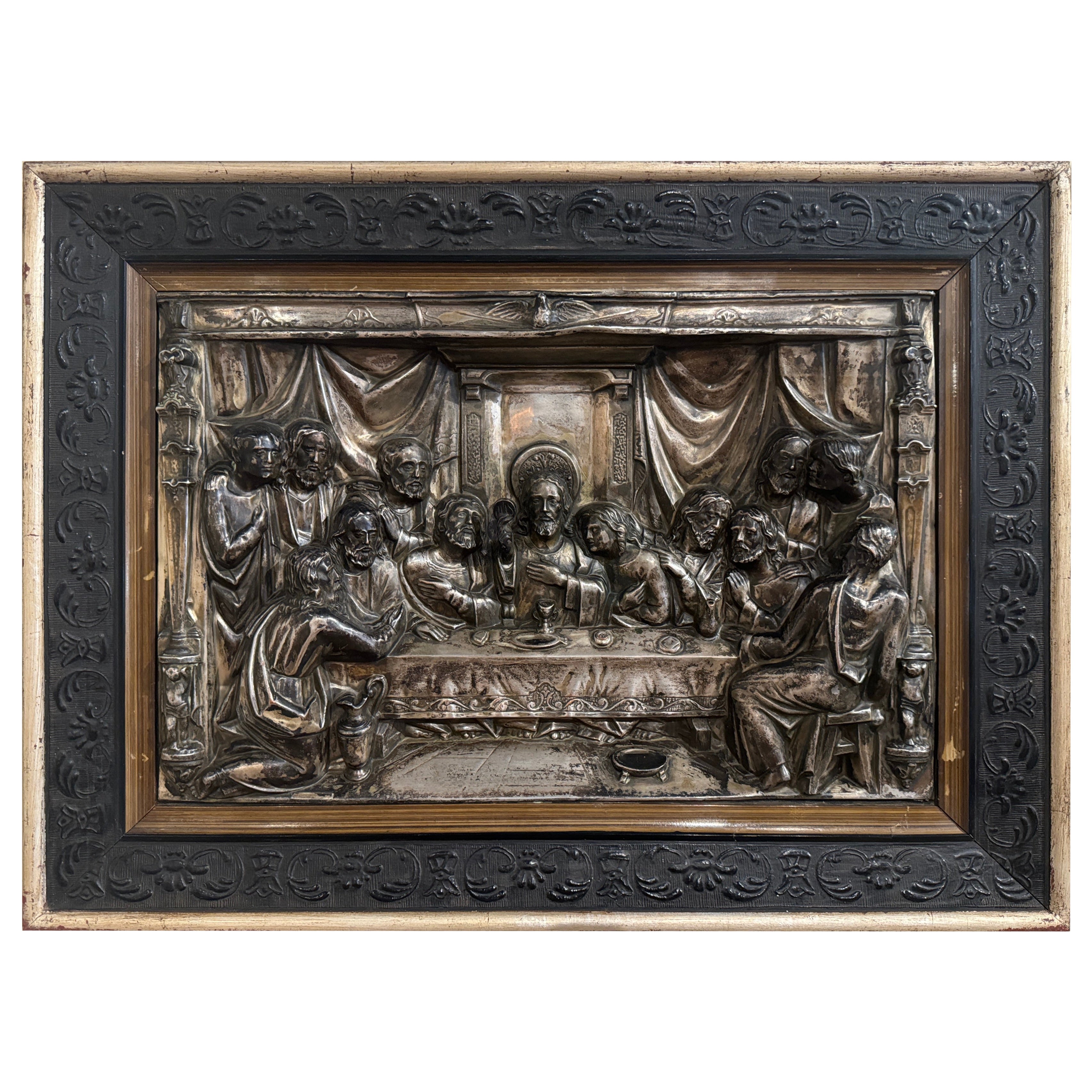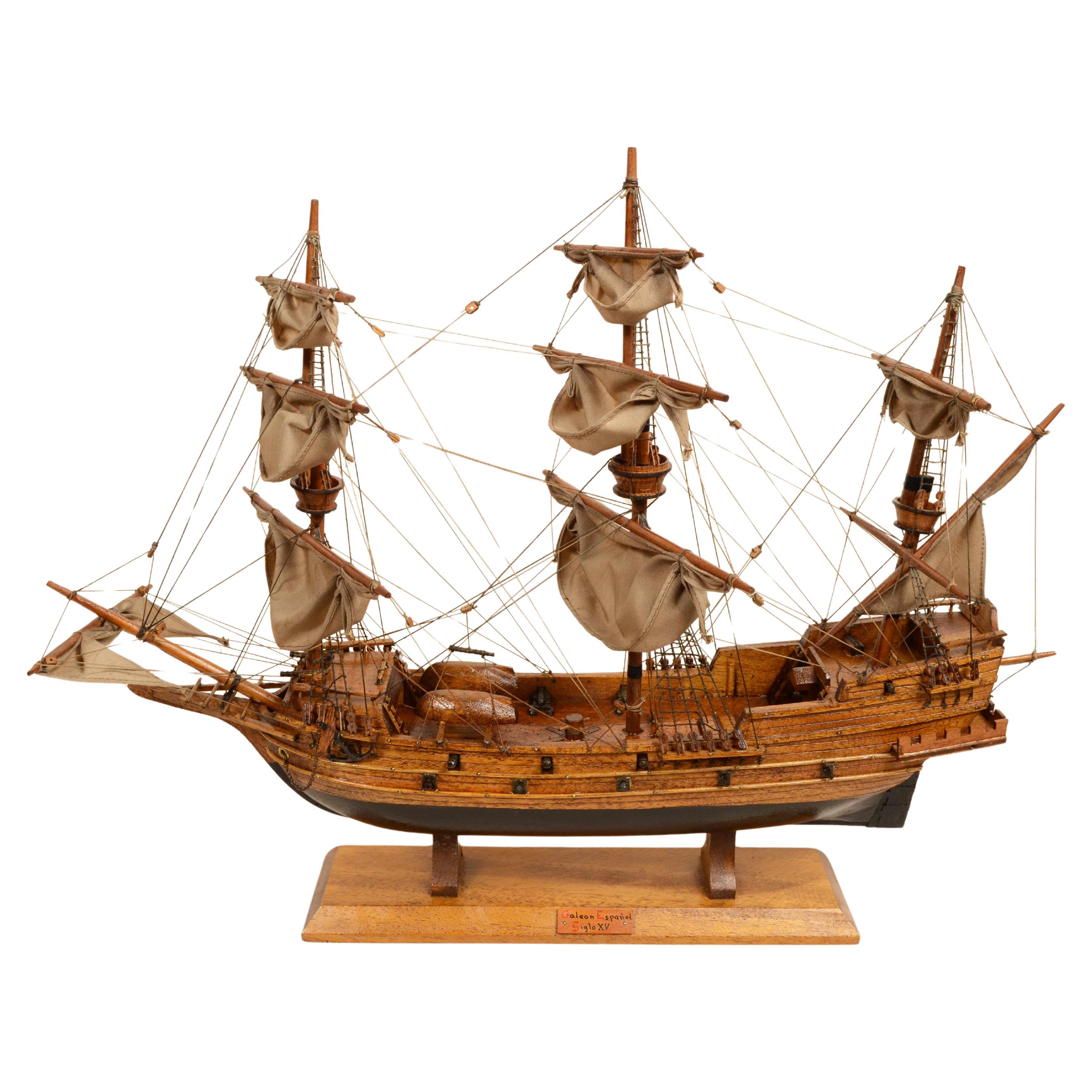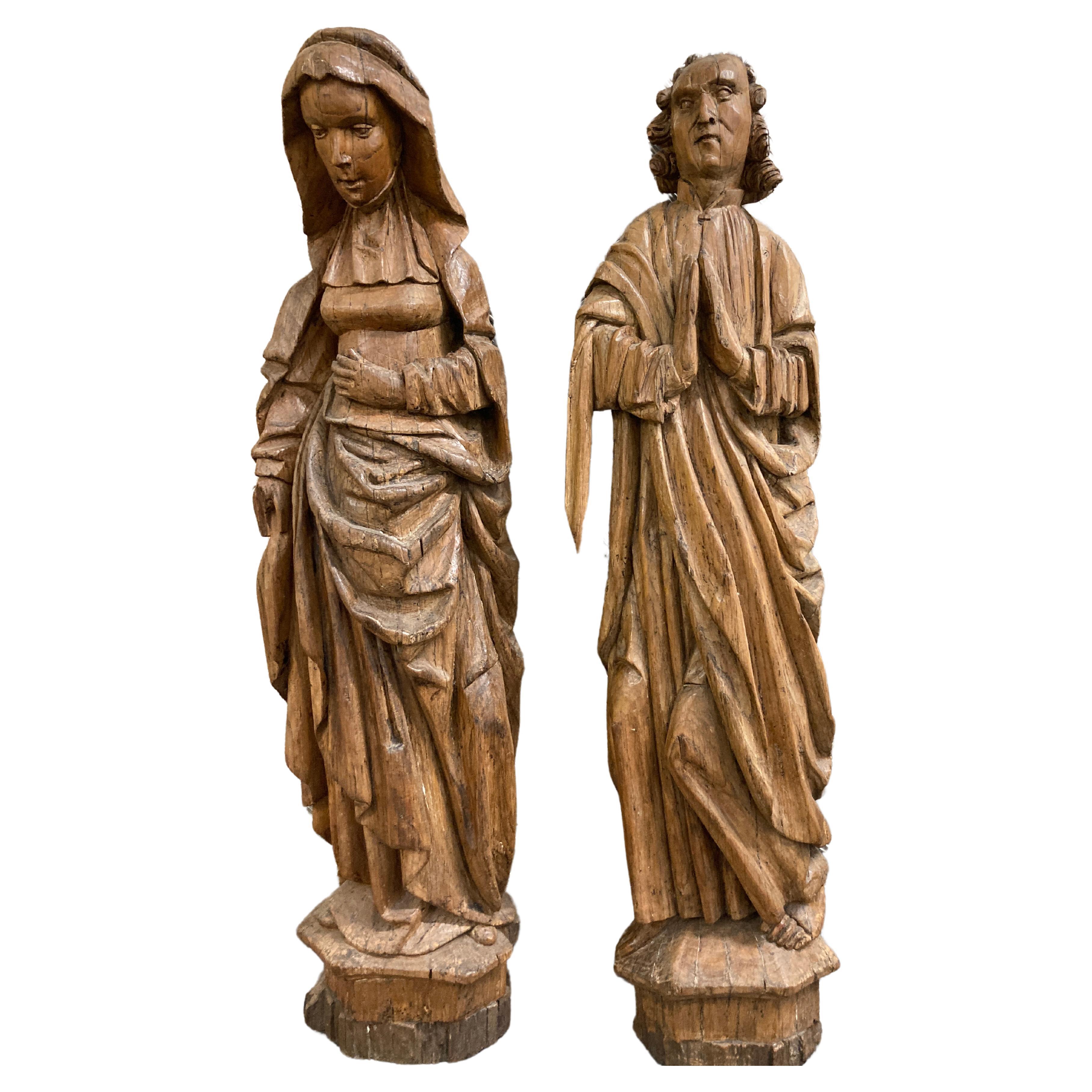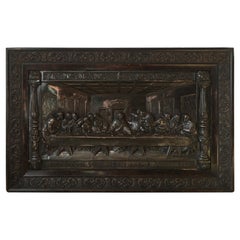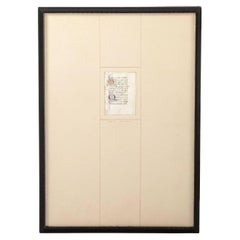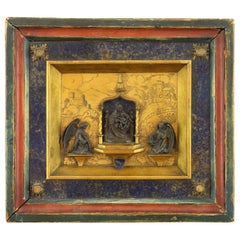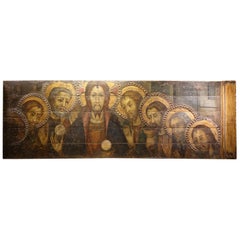
The Last Supper, Part of a Predella, Northern Italy, Late 15th Century
View Similar Items
1 of 12
The Last Supper, Part of a Predella, Northern Italy, Late 15th Century
Price:$15,476.94
$21,521.08List Price
About the Item
- Dimensions:Height: 23.63 in (60 cm)Width: 70.87 in (180 cm)Depth: 1.97 in (5 cm)
- Style:Renaissance (Of the Period)
- Materials and Techniques:
- Place of Origin:
- Period:
- Date of Manufacture:1480
- Condition:Wear consistent with age and use. Minor losses. Minor structural damages. Minor fading.
- Seller Location:Paris, FR
- Reference Number:1stDibs: LU1771210873063
Authenticity Guarantee
In the unlikely event there’s an issue with an item’s authenticity, contact us within 1 year for a full refund. DetailsMoney-Back Guarantee
If your item is not as described, is damaged in transit, or does not arrive, contact us within 7 days for a full refund. Details24-Hour Cancellation
You have a 24-hour grace period in which to reconsider your purchase, with no questions asked.Vetted Professional Sellers
Our world-class sellers must adhere to strict standards for service and quality, maintaining the integrity of our listings.Price-Match Guarantee
If you find that a seller listed the same item for a lower price elsewhere, we’ll match it.Trusted Global Delivery
Our best-in-class carrier network provides specialized shipping options worldwide, including custom delivery.You May Also Like
20th Century "The Last Supper" Dark Metal Relief
Located in Miami, FL
"The Last Supper" metal relief.
Relief measurements without frame: 24 in x 14 in.
Category
Antique Late 19th Century European Neoclassical Religious Items
Materials
Metal
$2,080 Sale Price
20% Off
Framed Late 15th Century Illuminated Book of Hours Manuscript
Located in Houston, TX
Framed late 15th century illuminated Book of Hours manuscript circa 1500, France. Gouache, ink gold wash and gold burnishing on vellum. Framed within large decorative matt. In very g...
Category
Antique 16th Century French Medieval Religious Items
Materials
Gold Leaf
Christ on the Cross – Late 15th Century, La Rioja (Spain)
Located in Madrid, ES
"Christ on the Cross – Late 15th Century, La Rioja (Spain)"
Important crucified Christ carved in polychrome wood, from the La Rioja region of Spain, and dating from the late 15th cen...
Category
Antique 15th Century and Earlier Spanish Gothic Religious Items
Materials
Wood
"Madonna with Child and Angels". Italy, 15th-16th Centuries
Located in Madrid, ES
Bronze in its color and gold, lapis lazuli, rock crystal, enamel.
In the centre of the work is presented, enthroned, the figure of Mary, with a mantel (fireplace) on her shoulders and hair and holding on her knees the child, who appears addressing one of the angels. The virgin is also sheltered by an ogee arch supported on turned columns, and raised visually by steps. This composition achieves a very striking contrast: the dark bronze figure, in contrast to the lapis lazuli background and the part of the arch and the outside of it, in gilded bronze. Under the steps there is a heraldic enamel shield with a key on an azure background. The angels, kneeling, are flanking this figure, and, appearing in dark bronze, visually share the "category" of religious figures with Mary, while their (lower) position gives more status to both the Mother and Jesus. The rest of the composition is completed with a delicate landscape: constructions and walls on mountains, clouds in the sky, plants, stones, etc. To the outside, another lapis lazuli frame is placed decorated in the corners with appliques, giving way to carved and polychrome wood. The lapis lazuli is a semiprecious stone already known in the seventh millennium BC., found in deposits from the Caucasus to Mauritania. From the end of the middle ages, it increased its export to Europe, its use being more frequent since then both to use it as a pigment in paintings after grinding it (giving rise to the finest and most expensive of the blues, and of the colors in many occasions), as for backgrounds of paintings, incrustations in works of art, jewelry and, a little later, in the well-known "hard stone works". The figure of Mary still shows an influence of Gothic models, although more European than Italian, along with elements that could already show a closeness to the Renaissance: although the nakedness of Jesus is already shown in Gothic works (Madonna with Angels by Fra Angelico ), the creation of space by playing with the cloth in front of Christ can be appreciated in more advanced paintings (Virgin with Child by Domenico Ghirlandaio, National Gallery of London); the presence of a powerful throne can be seen frequently in Italian Madonnas of the Quattrocento (and before), but not quite as presented here. As for the landscape, it is necessary to compare it, for example, with that of the fresco of the Condotiero Guidoriccio de Fogliano (Simone Martini, finished in 1328). This is a work of great technical and aesthetic quality, not to mention the materials chosen for its creation, comparable only to outstanding examples from around the world, such as those preserved in the Palazzo Madama in Torino (Italy), where the coral It also has an important role. It is essential to mention, also, works such as the plate of hard stones (lapis lazuli between them) with a relief of Mary with the Child in...
Category
Antique 16th Century Italian Renaissance Religious Items
Materials
Lapis Lazuli, Bronze, Enamel, Other
Last Supper. Oil on panel. Castilian School, 16th century.
Located in Madrid, ES
Last Supper. Oil on panel. Castilian School, 16th century.
It has faults.
An oil on panel painting depicting a figurative image against a neutral background, with a checkered tile...
Category
Antique 16th Century Spanish Renaissance Religious Items
Materials
Other
Antique Religion Print of the Last Supper, '1913'
Located in Langweer, NL
Large antique print of the Last Supper. Published by Mosella-Verlag, 1913. This print originates from a series titled 'Kathol. Schulbibelwerk von Dr. Ecker'.
Category
Early 20th Century Prints
Materials
Paper
$286 Sale Price
20% Off
Recently Viewed
View AllMore Ways To Browse
Italian Renaissance 15th Century
15th Century Italian Painting
Antique Last Supper Painting
Canadian Painted Furniture
Painting From 1970 French
Modern Danish Painting
Painted Wall Murals
Small Antique Paintings
Antique Bird Painting
Painting Antique Pine Furniture
Seascape Paintings
Antique Reverse Painted
Carved Wood Painting
Large Paintings 19th Century
Richard Waller
18th Century French Paintings
Antique Ducks
Used Furniture Brooklyn Ny
